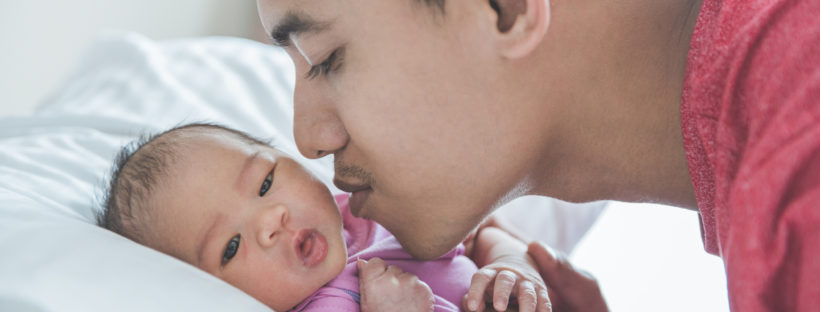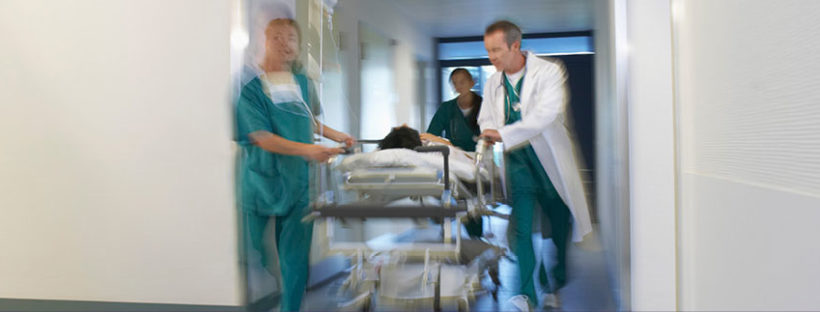by, Diane L. Spatz, PhD, RN-BC, FAAN & Rebecca Law, MA, RN, IBCLC, ANLC ,LCCE, FACCE
Barbara’s Story
Barbara (name changed) recently became a donor due to her prenatal diagnosis with an infant whose diagnosis was fatal. As part of prenatal care at her institution, all mothers receive a personalized, one to one, prenatal lactation consultation.
For palliative care cases, milk donation is discussed with the mother antenatally so she is aware of the possibility. In Barbara’s case she had an older child who she breastfed for over two years. She reported a fantastic breastfeeding experience and spoke enthusiastically about how important breastfeeding was to her as part of motherhood. With an infant with a known fatal anomaly, Barbara wanted to have the opportunity to breastfeed and experience motherhood. During the antenatal period, a birth plan was established so that she could hold her infant skin to skin immediately post-delivery and attempt breastfeeding. Barbara also began the screening process to become a Human Milk Banking Association of North America (HMBANA) donor and was determined that she would pump milk and donate for the duration of her maternity leave.
At the time of delivery, Barbara was able to hold her child and the infant attempted a few suckles at the breast. Even though the baby did not live for more than a few hours, the she was able to have her breastfeeding experience. Following delivery, Barbara finished the HMBANA screening process and her serological testing completed. She was approved as an HMBANA donor and expressed milk for about three months following delivery. For Barbara donating her milk was a huge part of her grieving experience. By being able to speak to the milk bank staff weekly, she had the opportunity to have a “mothering” and “breastfeeding experience”. She reported that it was so meaningful to her to know that her milk was going to help other sick infants right in her own community. She was thankful she had the little time with her daughter that she did, and felt her daughter’s short life had purpose in helping countless other children.
Why would mothers with extra milk donate to a human milk bank?
- Optimistic and altruistic behaviors are the primary reasons mothers donate their extra milk to an HMBANA milk bank. Mothers may find themselves with too much milk which they do not want to discard, and by donating their milk they are giving a tangible gift that they know will benefit other infants, because they have seen the benefits of their milk to their own child.Donors report positive emotions and say they would donate again if given the opportunity.
- Mothers who are familiar with the needs HMBANA milk banks and the infants they serve are motivated to donate their extra milk. Health care providers can influence a mother by recommending donation of her extra milk to a HMBANA milk bank.
- Bereaved mothers, such as Barbara, also choose to become donors to HMBANA milk banks. Some mothers know in pregnancy that their infant’s diagnosis is fatal and other mothers may have an infant who dies after a long hospitalization. Bereaved mothers report that by donating their milk they give meaning to their child’s life. They report that by donating their milk it helps in the grieving and healing process and may help with feeling a sense of closure.
Information About Milk Banking in the United States
Pasteurized donor milk is available from both non-profit and for-profit organizations in the United States. Non-profit milk banks are part of the Human Milk Banking Association of North America (HMBANA) and have a shared set of standardized milk banking practices. HMBANA has an interdisciplinary board with representatives from HMBANA milk banks as well as external board members from a variety of professions.
In order to donate milk, a mother must go through a vigorous screening process. The first step is a verbal health screening. The mother then completes an extensive health history and lifestyle questionnaire related to her health, her infant’s health, her lifestyle and dietary practices and must have a form filled out by her health care provider reporting her health status and laboratory testing from pregnancy. Additionally, the infant’s health care provider must complete a form stating the infant is in good health (unless in the case of fetal or infant demise). The milk bank coordinator reviews all materials and verbally reviews and confirms information with the mother. The mother then signs consent to be a donor and at this point the mother must undergo serological testing. The cost of the laboratory testing is $200-$300 and paid for by the milk bank.
Once a mother has passed all screening and her labs come back negative, she is approved to be a donor. Mothers can make a one-time donation or be repeat donors. However, if a mother continues to be a regular donor, the milk bank staff will follow-up regularly to ensure the mother has had no changes in her lifestyle or health.
Raw milk is stored frozen until ready to be prepared for pasteurization. Raw milk is thawed, pooled, poured and then pasteurized using the Holder pasteurization method. Each batch of milk that is pasteurized is also cultured post-pasteurization to ensure there is no bacteriological growth. Post-pasteurization, the milk is stored frozen. Once milk culture comes back negative, milk can be dispensed to donor recipients.
In the United States, most HMBANA milk is donated to hospitals with neonatal intensive care units (NICUs). Pasteurized donor milk is mostly used for preterm infants or other vulnerable infants. However, there is some published literature supporting the use of donor milk for term infants or late preterm infants, if supplementation is required during the hospital stay. In the community setting, a prescription from a health professional is required for the milk bank to dispense pasteurized donor milk to a home.
Pasteurized donor milk from HMBANA is provided on a cost-recovery basis causing the milk banks to charge a processing fee of $3.00 to $5.00 per ounce. Insurance reimbursement varies from state to state resulting in a cost to the hospitals or consumers.
 Diane L. Spatz, PhD, RN-BC, FAAN is a Professor of Perinatal Nursing & the Helen M. Shearer Professor of Nutrition at the University of Pennsylvania School of Nursing sharing a joint appointment as a nurse researcher and director of the lactation program at the Children’s Hospital of Philadelphia (CHOP). Dr. Spatz is also the director of CHOP’s Mothers’ Milk Bank. Dr. Spatz is an active researcher, clinician, and educator who is internationally recognized for her work surrounding the use of human milk and breastfeeding particularly in vulnerable populations. Dr. Spatz has been PI or co-investigator on over 30 research grants, included several from the NIH. She has authored and co-authored over 80 peer reviewed publications. Dr. Spatz has authored or co-authored position statements for the International Lactation Consultant Association, the Association of Women’s Health Obstetric & Neonatal Nursing and the National Association of Neonatal Nurses.
Diane L. Spatz, PhD, RN-BC, FAAN is a Professor of Perinatal Nursing & the Helen M. Shearer Professor of Nutrition at the University of Pennsylvania School of Nursing sharing a joint appointment as a nurse researcher and director of the lactation program at the Children’s Hospital of Philadelphia (CHOP). Dr. Spatz is also the director of CHOP’s Mothers’ Milk Bank. Dr. Spatz is an active researcher, clinician, and educator who is internationally recognized for her work surrounding the use of human milk and breastfeeding particularly in vulnerable populations. Dr. Spatz has been PI or co-investigator on over 30 research grants, included several from the NIH. She has authored and co-authored over 80 peer reviewed publications. Dr. Spatz has authored or co-authored position statements for the International Lactation Consultant Association, the Association of Women’s Health Obstetric & Neonatal Nursing and the National Association of Neonatal Nurses.
In 2004, Dr. Spatz develop her 10 step model for human milk and breastfeeding in vulnerable infants. This model has been implemented in NICUs throughout the United States and other countries worldwide. Dr. Spatz has been named a prestigious “Edge Runner” for the American Academy of Nursing related to the development and outcomes of her model. Her nurse driven models of care are critical in improving human milk & breastfeeding outcomes and thus the health of women and children globally.
Dr. Spatz is also the recipient of numerous awards including: Research Utilization Award from Sigma Theta Tau International and from the University of Pennsylvania: the Dean’s Award for Exemplary Professional Practice, the Expert Alumni Award and the Family and Community Department’s Academic Practice Award She is also the recipient of the Lindback Award for Distinguished Teaching. Dr. Spatz received the Distinguished Lang Award for her impact on scholarship, policy & practice.
In the university portion of her job, she teaches an entire semester course on breastfeeding and human lactation to undergraduate nursing students and in the hospital portion of her job, she developed the Breastfeeding Resource Nurse program. Dr. Spatz is also Chair of the American Academy of Nursing’s Expert Panel on Breastfeeding and their representative to the United States Breastfeeding Committee. Dr. Spatz is also a member of the International Society for Researchers in Human Milk & Lactation.
 Rebecca Law, MA, RN, IBCLC,ANLC,LCCE,FACCE is the manager of a the Lactation and Childbirth Education Departments at Texas Health Harris Methodist Hospital Fort Worth and has over 25 years experience in womens health. She has received a Masters degree in Health and Wellness with the focus on Human Lactation and is certified as an IBCLC and Advanced Nurse Lactation Consultant. In addition she is certified as a Lamaze Childbirth Educator and has been educating patients and staff for many years. She is part of the Baby Friendly Hospital Initiative team assisting the hospital with the designation in 2010 and is the current chair of the hospital system BFHI group. She has experience as a podium and poster presenter at several state, national and international conferences including Lamaze International, ILCA, State Breastfeeding Coalitions, and NICHQ.
Rebecca Law, MA, RN, IBCLC,ANLC,LCCE,FACCE is the manager of a the Lactation and Childbirth Education Departments at Texas Health Harris Methodist Hospital Fort Worth and has over 25 years experience in womens health. She has received a Masters degree in Health and Wellness with the focus on Human Lactation and is certified as an IBCLC and Advanced Nurse Lactation Consultant. In addition she is certified as a Lamaze Childbirth Educator and has been educating patients and staff for many years. She is part of the Baby Friendly Hospital Initiative team assisting the hospital with the designation in 2010 and is the current chair of the hospital system BFHI group. She has experience as a podium and poster presenter at several state, national and international conferences including Lamaze International, ILCA, State Breastfeeding Coalitions, and NICHQ.



 by, Melissa Strunc, RN
by, Melissa Strunc, RN The first general session had so many “ah-ha” moments for me, I don’t even know where to start. Not only was the presenter knowledgeable, but her words touched my heart and soul. It was uplifting and encouraging, at the same time challenging and convicting. As I sat there, I found myself wishing she could do the entire conference – and she’s not even an OB nurse! I left with tears in my eyes, and her presentation wasn’t even sad!! THANK YOU, Captain Beeson! I will definitely be hunting down these slides and sharing her words with my colleagues and managers concerning resilience!
The first general session had so many “ah-ha” moments for me, I don’t even know where to start. Not only was the presenter knowledgeable, but her words touched my heart and soul. It was uplifting and encouraging, at the same time challenging and convicting. As I sat there, I found myself wishing she could do the entire conference – and she’s not even an OB nurse! I left with tears in my eyes, and her presentation wasn’t even sad!! THANK YOU, Captain Beeson! I will definitely be hunting down these slides and sharing her words with my colleagues and managers concerning resilience!
 Lori Boggan, RN
Lori Boggan, RN The story of Anne Gallagher, staff nurse at the University of Illinois Hospital & Health Sciences, is one of the many stories that inspire and remind us of the dedication and care that goes into the nursing profession.
The story of Anne Gallagher, staff nurse at the University of Illinois Hospital & Health Sciences, is one of the many stories that inspire and remind us of the dedication and care that goes into the nursing profession.
 Donna is a Perinatal Clinical Specialist at JFK Medical Center in NJ. She has always loved OB nursing and also enjoys teaching. She is currently an adjunct instructor at Kaplan University and Walden University. She was the Hospital Lead for AWHONN’s PPH Project.
Donna is a Perinatal Clinical Specialist at JFK Medical Center in NJ. She has always loved OB nursing and also enjoys teaching. She is currently an adjunct instructor at Kaplan University and Walden University. She was the Hospital Lead for AWHONN’s PPH Project.
 With Kelsey’s second baby, after discussing the risks and benefits with her provider, Kelsey wanted to attempt VBAC. I was very hopeful for her, but sick to my stomach a little too. Remembering Pam’s story, I was incredible apprehensive and ultimately didn’t want anything bad to happen to Kelsey. Her pregnancy flew by and was induced at 39 weeks and 5 days. I raced to the hospital with the very important job of taking pictures. Kelsey’s labor progressed and she delivered quickly with no complications. Watching my best friend get to see her baby immediately and hold and soothe her right away is one of my most favorite memories of my career. I had taken care of many women who had successful VBAC, but did not really understand its significance until seeing first hand Kelsey and her husband experience both types of delivery. Never having a cesarean myself, but circulating hundreds, I considered them routine. It was very powerful for me to see the difference between a vaginal birth and a cesarean for the same woman.
With Kelsey’s second baby, after discussing the risks and benefits with her provider, Kelsey wanted to attempt VBAC. I was very hopeful for her, but sick to my stomach a little too. Remembering Pam’s story, I was incredible apprehensive and ultimately didn’t want anything bad to happen to Kelsey. Her pregnancy flew by and was induced at 39 weeks and 5 days. I raced to the hospital with the very important job of taking pictures. Kelsey’s labor progressed and she delivered quickly with no complications. Watching my best friend get to see her baby immediately and hold and soothe her right away is one of my most favorite memories of my career. I had taken care of many women who had successful VBAC, but did not really understand its significance until seeing first hand Kelsey and her husband experience both types of delivery. Never having a cesarean myself, but circulating hundreds, I considered them routine. It was very powerful for me to see the difference between a vaginal birth and a cesarean for the same woman. Bree Fallon, BSN, RNC-OB, C-EFM
Bree Fallon, BSN, RNC-OB, C-EFM



 Elizabeth McIntire, WHNP,WHNP-C, EFM-C
Elizabeth McIntire, WHNP,WHNP-C, EFM-C